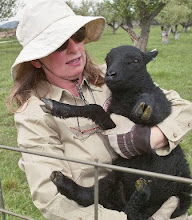
Construction is proceeding at a rapid pace. All the rest of the windows and doors got installed. The stairs got roughed in and we can easily get up and down to appreciate the views from the upper floor. I sure like going up the stairs rather than climbing the ladder!

The siding got delivered and already a lot of it is installed. We are using a concrete composite board siding with batts over the top so it will look like the old red barn but be more fire resistant. We will have to wait until spring or summer to paint the building. It's much too cold to do any painting now. Eventually it will be red like the old restored barn but for now it will remain grey.

The heating contractor was up to measure for the heater and we'll also have a swamp cooler for cooling in summer. While the actual furnace may not get installed for a while we need to size it and get the vent pipes out the top before the metal roof is put on.
Electrical wires have to be run and all lighting installed. We haven't even decided what we want where. I know that we'll need a lot of electrical outlets. Every construction project we add more outlets and we still never seem to have enough where we need them.
Our weather has been very cold, we haven't gotten above freezing for the last 10 days. This makes it really hard to work outside so construction starts after the sun comes up and the wind dies down and ends early, before the sun goes down and it gets really cold.
Our sheep are eating a lot of extra hay to keep warm but otherwise seem happy. We have some ongoing problems of keeping the water heaters plugged in and water tanks unfrozen. Bored sheep like to play with the heaters.
Our biggest excitement was coming home one morning after taking 4 sheep to butcher to find a coyote inside the new elk fence. We tried to shoot it, but missed and it actually climbed up and out the new fence! Our guard dogs aren't able to run the entire area because that is where the horses are. It was discouraging to know the coyotes can climb such a tall fence. I thought they only dug or climbed smaller ones. It proves the point that predator protection has to be multi-layer in our area. Even really good fences are not enough to keep our stock safe.
 Construction continues at a rapid pace. Batts are being added over the top of the siding, door and window trim is being installed and the flashing for the roof is going up before the dormer siding is done.
Construction continues at a rapid pace. Batts are being added over the top of the siding, door and window trim is being installed and the flashing for the roof is going up before the dormer siding is done. 













